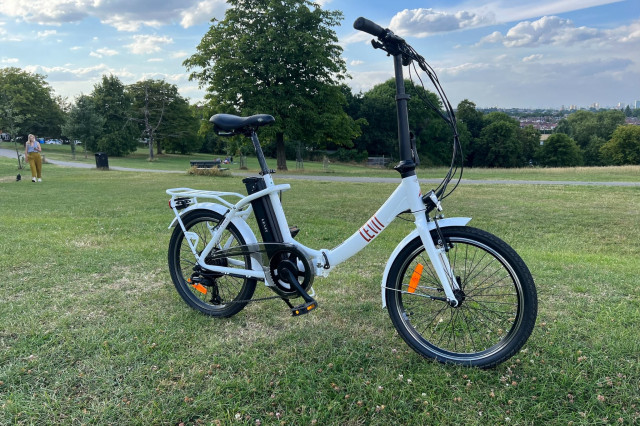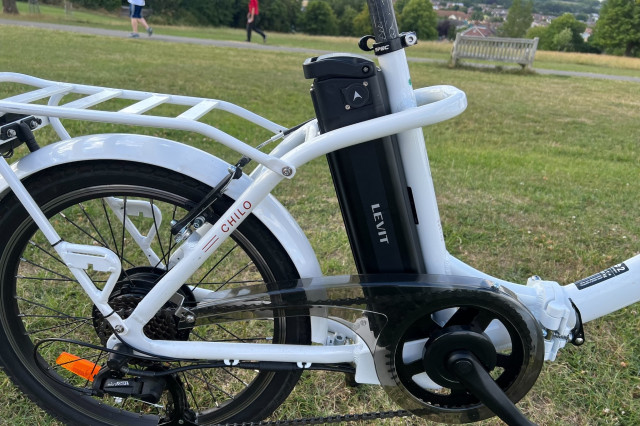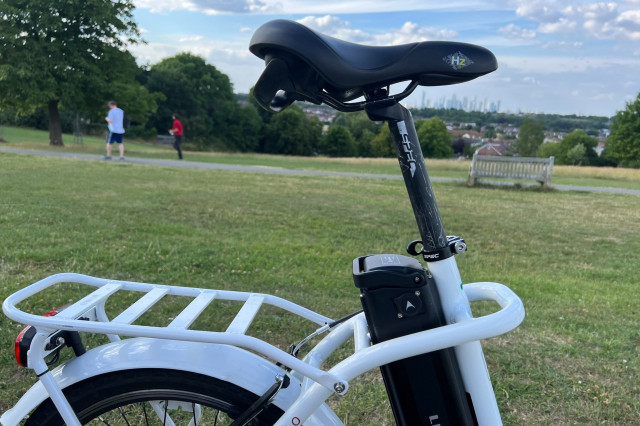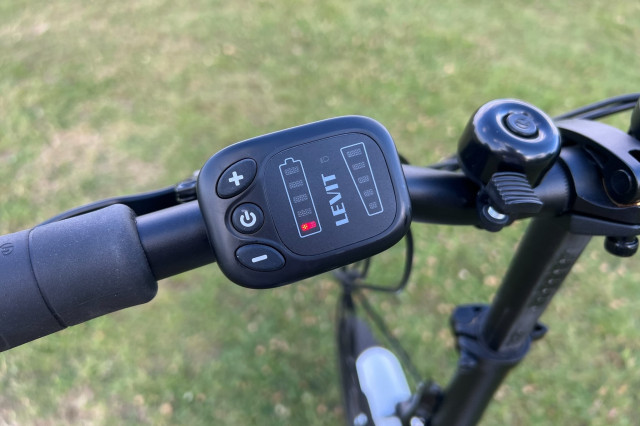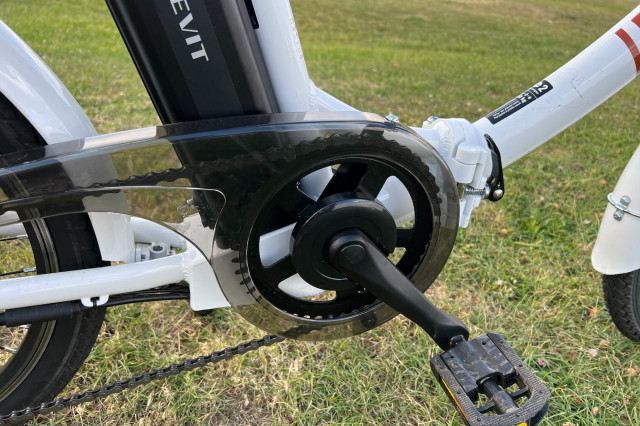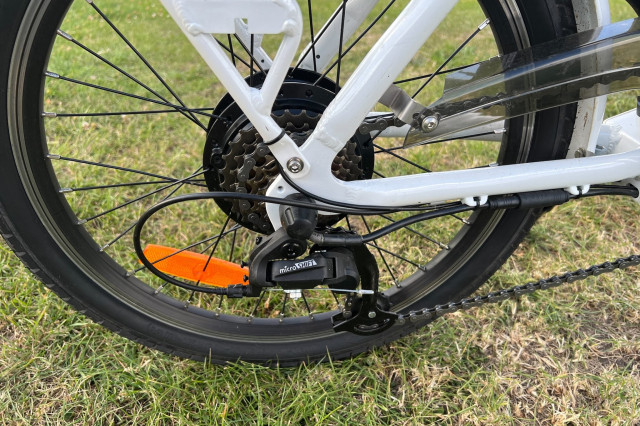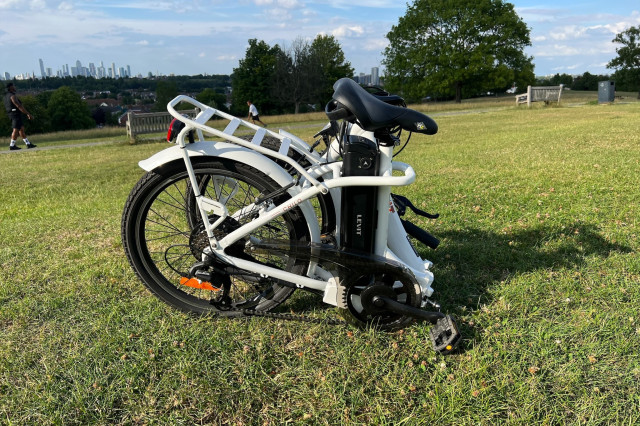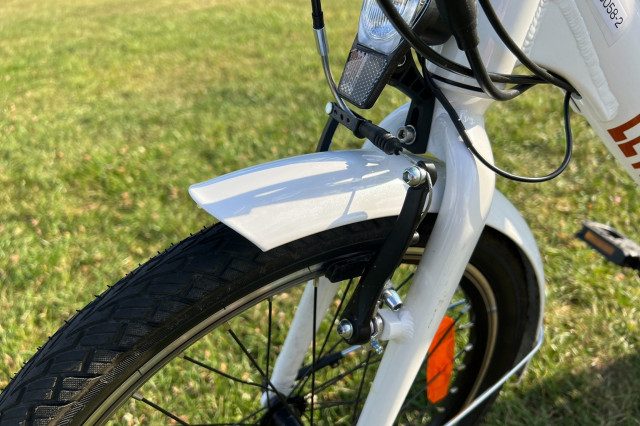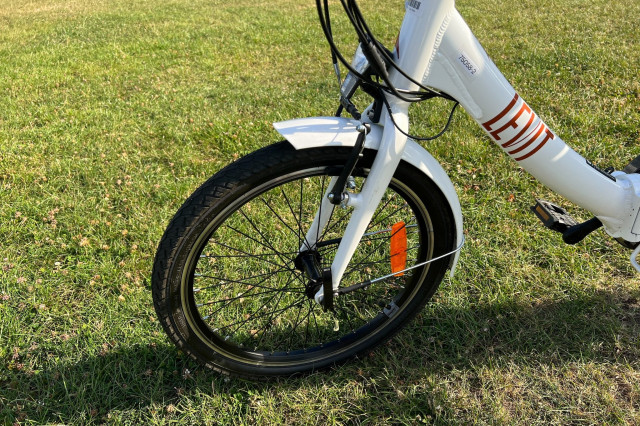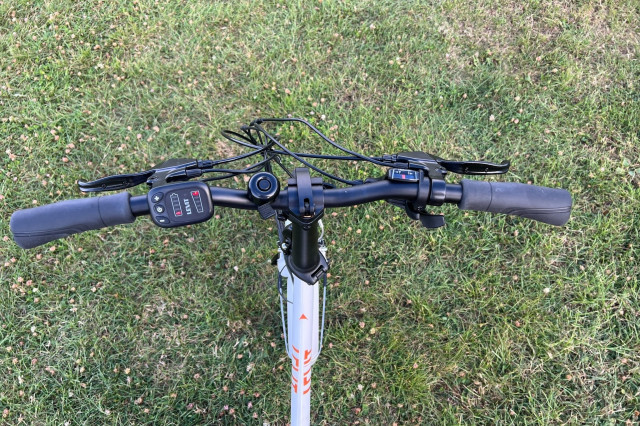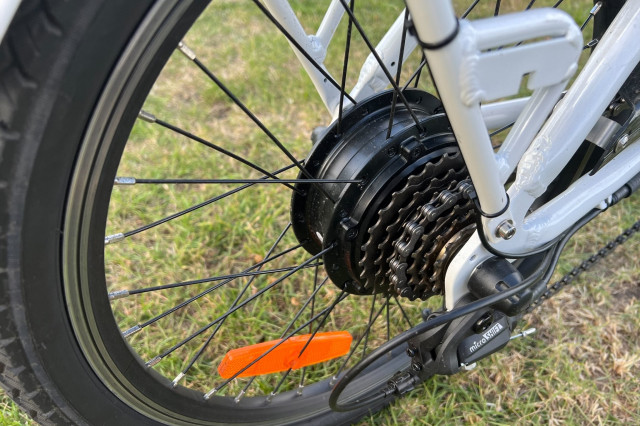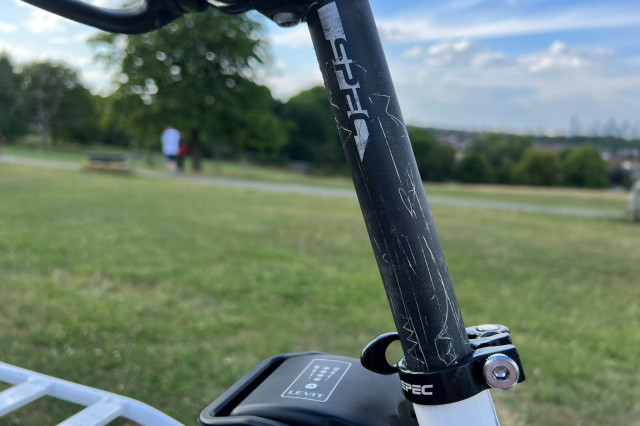Levit Chilo 3
Overview
- Good price
- Folds down small
- Decent assistance with relatively quick pickup
- Brakes lack stopping power
- Battery placement is not well thought out
- Battery meter has its quirks
The Levit Chilo 3 folds down nice and small, is well-priced, and gives a decent boost, but it is somewhat let down by poor braking performance and some quirky design choices.
Specs and components
Levit have specced the Chilo 3 out with some of their own components, but also many from various other companies.
The motor is the Levit HD. The company’s own hub motor offers 40Nm torque, which seems to be enough for most uses, with no issues going up even steep hills. It picks up relatively quickly too – generally around half a pedal rotation. This isn’t as good as others, but is more than adequate for a bike of this size and weight.
Combined with this motor is a simple Levit LED display, displaying the battery level and assist level and which also allows you to control the integrated lights. Control of it is via three buttons: one to turn it on, one to up the assist level and the other to decrease it. It’s no-frills, but if you’re just looking for a simple electric commuter bike then in reality you don’t need much more than this.
The Chilo 3 has a 7-speed 14-28 tooth cassette and Wheel Top 42-tooth front ring, which is fine for lower speeds but feels under-geared on the flat. This means that it’s a challenge going beyond a certain speed. It felt like the only time I used even the middle of the cassette was going up a steep hill. It would perhaps have been better to increase the size of the front ring to help maintain higher speeds on the flat, which is predominantly where this kind of bike is likely to be used.
The under gearing helps to explain one of the odd elements of the bike, which is that it doesn’t keep up with other electric bikes. Generally speaking, when testing these I end up bunching with other e-bikes because we all tend to sit at the top of the assistance threshold. However, mainly due to the gearing, this feels like it loses assistance about 3km/h slower than it needs to. This may well just be hitting the gearing limits though as it rather oddly appears to go up slight hills more quickly than it goes on the flat, which is an odd experience.
An element of the bike that is particularly noticeable is that it is the first e-bike I’ve tested that uses rim brakes - in this case, Promax TX-117 V-brakes. These do not have much stopping power and regardless of what I did, I couldn’t stop the front from screaming every time I touched the lever. This isn’t ideal for a bike weighing this much – especially when my commute to work starts with a descent of a 14% hill…
One of the elements of the bike that does work incredibly well is the folding, which allows it to fold down to a very respectable size. I found that I could comfortably stash it under my desk at work if needed.
However, an element that needs to be looked at it is the seat post and the seat tube. Firstly, the position of it means that in order to remove the battery you need to remove the seat post or at the very least pull it right to the top of its limit. The seat tube also appears to have several imperfections within it, while the seat post metal feels soft and is black coated with silver metal underneath. This means that when you either want to charge the battery away from the bike or when you fold it up, moving the seat post tends to result in noticeable scratches.
Battery and charging
The Levit ST 374Wh battery is employed, which the firm markets as, ‘Ride more, recharge less often’. I generally found that with my mainly flat commute with hills at the end, the Chilo 3 would get between 30-35km on a single charge when being used with max assistance. I would find that if I didn’t charge it at work I would need to drop down to a lower assistance level for a portion of my journey home to make sure I could use the full assistance for the last steep hill.
Charging time is between 3-4 hours from empty which is about what I would expect and the battery can be charged either on the bike or it can be removed for more convenience. However, as mentioned above, doing this is a bit of a pain due to the design of the seat post.
Another element of the battery and charging that could be improved is that the display almost instantly drops from 5 lit LEDs to 4 when you get out onto the road. This means that using this as a reliable indicator of genuine battery life is difficult. I found that I would leave my front door with the bike fully charged and it would go from 5 LEDs to 4 in under a minute, then stay on 4 for 35 minutes before dropping to 3.
Performance and ride
The Chilo 3 itself handles well and is responsive enough for commuting in terms of handling and motor pickup. I never really found myself struggling to get up hills or having issues when cornering.
As mentioned above, there does seem to be about 3km/h missing from the top end of the assistance limit, which meant that I was finding myself being overtaken by other e-bikes which should have been limited to the same speed. This was noticeable not only when comparing my speed to others, but also just when going along by myself. I would like to think that I am now well attuned to the ‘standard’ e-bike pace and this is noticeably limited below this.
However, this doesn’t really impact much aside from getting to places a little more slowly. The assist itself is still powerful enough that I didn’t really feel like I had to do any more than on any other e-bike, even when tackling steep hills.
Value
The Chilo 3 comes with an RRP of £1,049.99, which is very competitive and among the cheapest we’ve had in for review in the last couple of years.
There are clear compromises to hit this price point though. The brakes, for instance, are not the most powerful and it’s a rarity to see even budget e-bikes without disc brakes in 2022. The combination of the easily-scratched seat post and imperfections in the seat tube also suggest that corners have been cut in that area too.
The Dallingridge Oxford is £150 more expensive, but includes disc brakes and a more convenient design in terms of battery removal too.
The Fiido D11 which we reviewed in 2020 is currently available for £907 (converted from dollars). This also features disc brakes, a better display, and a bigger battery (417Wh vs 374Wh on the Chilo 3).
It means that although this is well priced, if you are looking for a budget option in this price range you could potentially get a more rounded bike.
If your pockets are a little deeper, we’ve always liked the MiRider One (£1,595) – although it only boasts a 187Wh battery.
Overall
I have mixed feelings about the Chilo 3. It folds down well, offers a good level of assist, and is well priced, but there are a number of oddities and failings.
The fact that they’ve included a removable battery but fitted it in a place that requires removal of the seat post (which then always scratches when you replace it or adjust it) seems short-sighted at best.
Similarly, finding an e-bike without disc brakes in 2022 is a rarity, and for good reason. These brakes will stop you, but they do not offer anything close to even a cheap disc brake setup in terms of stopping power. It again seems like an oversight in the current market where even the cheapest e-bikes come with them.
Finally, the fact that this is under-geared and appears to be limited well below the legal limit means that it’s slow too. When you compare the most expensive e-bikes and the cheapest, they generally have the same top assist speed, so it’s odd that they have either chosen to limit this more than required or incorrectly configured the assistance levels.
If I were to buy this bike I wouldn’t really have many issues using it as a cheap commuter, but you can get bikes at around this price that do not have these issues.
